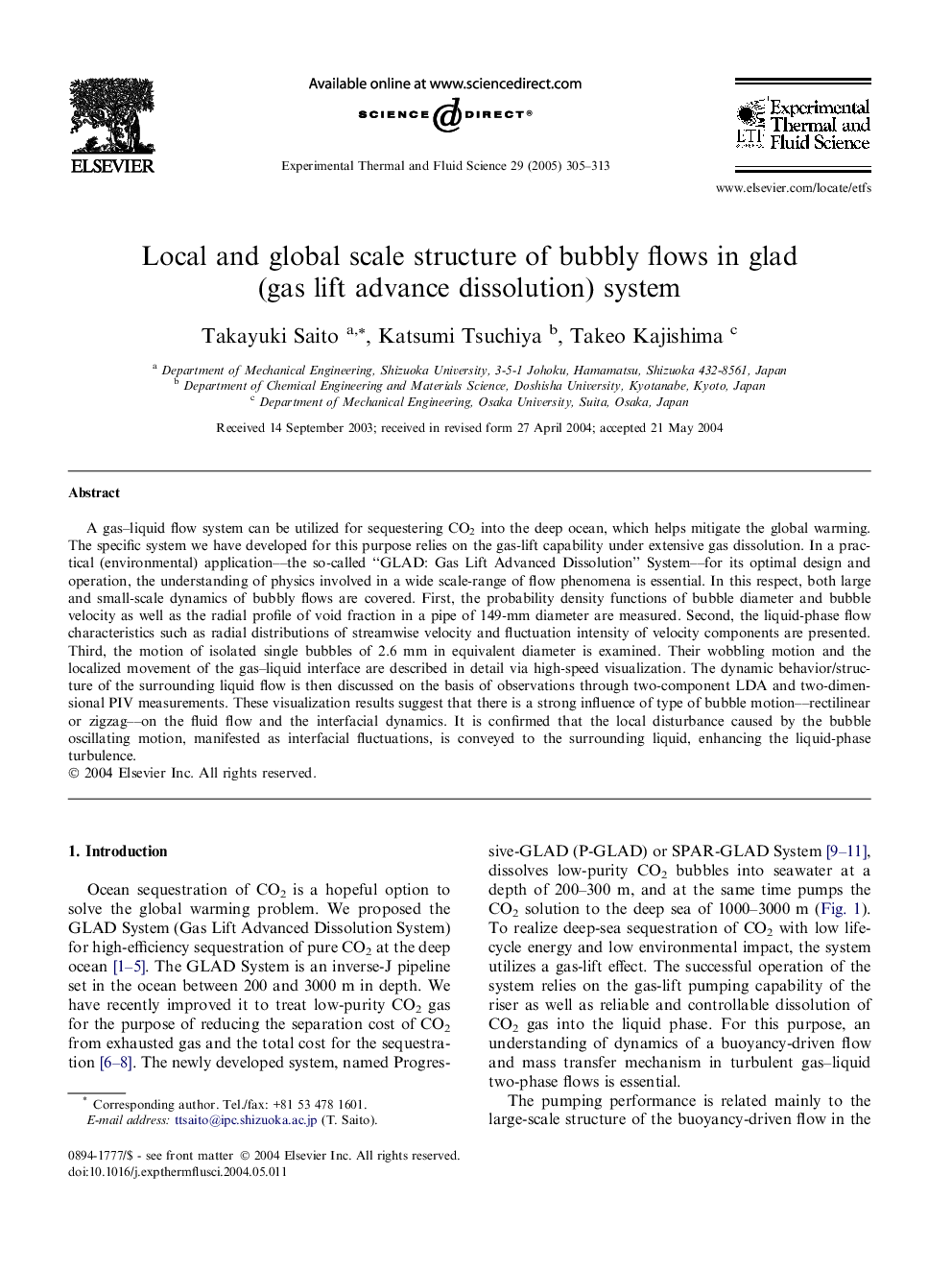| Article ID | Journal | Published Year | Pages | File Type |
|---|---|---|---|---|
| 10391847 | Experimental Thermal and Fluid Science | 2005 | 9 Pages |
Abstract
A gas-liquid flow system can be utilized for sequestering CO2 into the deep ocean, which helps mitigate the global warming. The specific system we have developed for this purpose relies on the gas-lift capability under extensive gas dissolution. In a practical (environmental) application--the so-called “GLAD: Gas Lift Advanced Dissolution” System--for its optimal design and operation, the understanding of physics involved in a wide scale-range of flow phenomena is essential. In this respect, both large and small-scale dynamics of bubbly flows are covered. First, the probability density functions of bubble diameter and bubble velocity as well as the radial profile of void fraction in a pipe of 149-mm diameter are measured. Second, the liquid-phase flow characteristics such as radial distributions of streamwise velocity and fluctuation intensity of velocity components are presented. Third, the motion of isolated single bubbles of 2.6 mm in equivalent diameter is examined. Their wobbling motion and the localized movement of the gas-liquid interface are described in detail via high-speed visualization. The dynamic behavior/structure of the surrounding liquid flow is then discussed on the basis of observations through two-component LDA and two-dimensional PIV measurements. These visualization results suggest that there is a strong influence of type of bubble motion--rectilinear or zigzag--on the fluid flow and the interfacial dynamics. It is confirmed that the local disturbance caused by the bubble oscillating motion, manifested as interfacial fluctuations, is conveyed to the surrounding liquid, enhancing the liquid-phase turbulence.
Related Topics
Physical Sciences and Engineering
Chemical Engineering
Fluid Flow and Transfer Processes
Authors
Takayuki Saito, Katsumi Tsuchiya, Takeo Kajishima,
